|
A hotel, a couple of birds and trees.
  
The only mention of Barbados in our "1000 things"
book in Sandy Lane a beautiful hotel at £1000 plus per room per night, we just
had a LOOK.
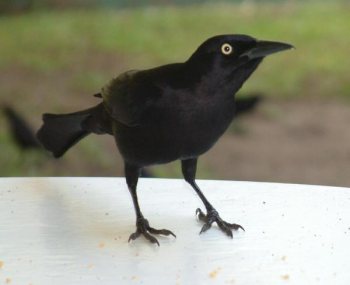 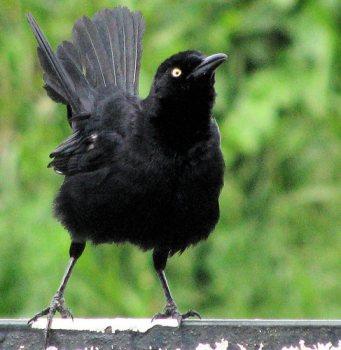 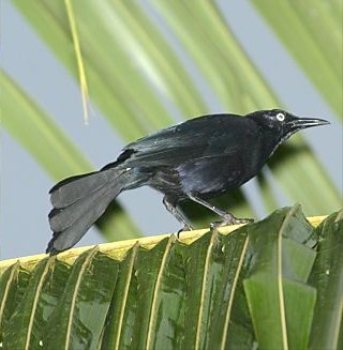
Not a day has gone past when we haven't seen loads
of these chaps. The Carib Grackle, Quiscalus lugubris, is a New
World tropical blackbird, a resident breeder in the Lesser
Antilles and northern South
America east of the Andes, from
Colombia east to Venezuela and northeastern
Brazil. The adult male Carib Grackle is 27cm
long with a long wedge-shaped tail, although the latter is not so long as with
other grackles. Its plumage is entirely black with a violet
iridescence, its eyes are yellow, and it has a strong dark bill.
The adult female is 23cm long, with a shorter tail and brown plumage, darker on
the upperparts. Young males are shorter tailed than adult males and have some
brown in the plumage. Young females are very similar to the adult females.
The breeding habitat is open areas including cultivation and
human habitation. This is a colonial breeder, with several deep, lined cup nests
often being built in one tree. Two to four whitish eggs are laid. Incubation
takes 12 days, with a further 14 to fledging. This species is sometimes
parasitised by Shiny Cowbird, but is quite
successful at rejecting the eggs of that species. The Carib
Grackle is a highly gregarious species, foraging on the ground for
insects, other invertebrates or scraps. It can
become very tame and bold, entering restaurants to seek food, normally feeding
on leftovers. It will form groups to attack potential predators, such
dogs, mongooses or
humans, and at night it roosts colonially. The Carib Grackle's song is a mixture of harsh and more musical ringing
notes, with a bell-like tickita-tickita-tickita-ting and a rapid chi-chi-chi-chi
being typical. The calls vary in dialect between islands and the bird usually
fluffs up its feathers when calling.
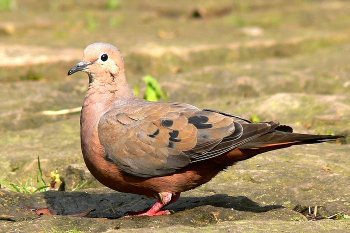 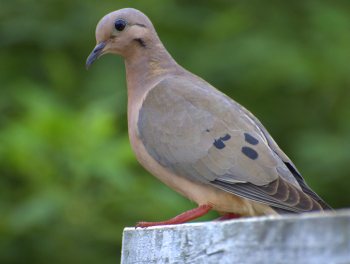 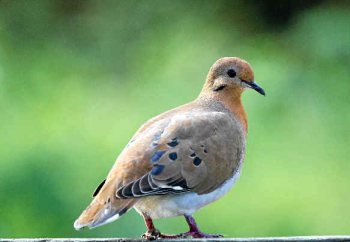
The Eared Dove, Zenaida auriculata,
(first and second pictures) is a New World tropical
dove. It is a resident breeder throughout South
America from Colombia to southern
Argentina and Chile, and on the offshore
islands from the Grenadines southwards. It may be a relatively
recent colonist of Tobago and
Trinidad. It appears to be partially
migratory, but details are little known, although migration may
be driven by food supplies. It is a close relative of the
North American Mourning Dove. With that
species, the Socorro Dove, and possibly the
Galapagos Dove it forms a super
species. The latter two are insular offshoots, the Socorro
birds from ancestral Mourning Doves, the Galápagos ones from more ancient
stock.
The Zenaida Dove, Zenaida aurita
(third photo) is a member of the bird family Columbidae,
which includes doves and pigeons. It is the national bird
of Anguilla, where it is commonly (but erroneously) referred to as
a Turtle Dove. The Zenaida Dove breeds throughout the West
Indies and the tip of the Yucatan
Peninsula. It was reported by Audubon to breed in the Florida
Keys, but there are only three verifiable records from Florida. It lays two
white eggs on a flimsy platform built on a tree or shrub. It also nests in rock
crevices and on grassy vegetation if no predators are present. It has been
recorded of some birds having up to 4 broods per year. Eggs take approximately
two weeks to hatch, and the young chicks typically fledge after only two weeks
in the nest. Parents feed the young pigeon's
milk, a nutrient rich substance
regurgitated from its crop. The bird is resident and abundant over much of its range. Zenaida Doves
are commonly hunted as a game bird. The Zenaida Dove is approximately 28–30
cms in length. It looks very similar to the Mourning
Dove, but is smaller in size, has a shorter, more rounded
tail, and is a bit more darkly coloured. It is also distinguished from the
Mourning Dove by showing white on the trailing edge of its wings in while in
flight. The Mourning Dove does not have the white trailing edge. This bird is found in a range of open and semi-open habitats. Its
mournful cooOOoo-coo-coo-coo call is similar to the call of a Mourning Dove, but
faster in pace. These birds forage on the ground, mainly
eating grains and seeds, sometimes also on
insects. Zenaida Doves frequently feed close to water. They
often swallow fine gravel to assist with
digestion, and will also ingest salt from mineral rich soils or
livestock salt licks. It is thought the salt aids in egg formation and/or
production of pigeon milk.
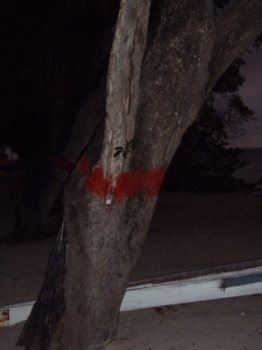 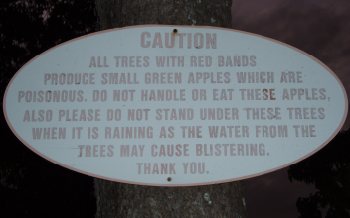 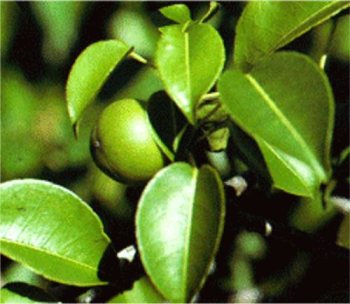
The Manchioneel tree (Hippomane mancinella) is a species of flowering plant in the
spurge family (Euphorbiaceae), native to Florida
(where it is an endangered species), the
Bahamas, the Caribbean, Central
America, and northern South
America. The name "manchineel" (sometimes written
"manchioneel") as well as the specific epithet mancinella is from
Spanish manzanilla ("little apple"), from the superficial
resemblance of its fruit and leaves those of an
apple tree. A present-day Spanish name is in fact manzanilla
de la muerte, "little apple of death". This refers to the fact that manzanilla
is one of the most poisonous trees in the world. I know the word as Manchioneel
after several species of tropical bird, the first in 2005 in the BVI’s.
Manchioneel is a tree reaching up to 15
metres high with a greyish bark, shiny green leaves and spikes of small greenish
flowers. Its fruits, which are similar in appearance to an
apple, are green or greenish-yellow when ripe. The manchioneel tree can be found near to (and on) coastal
beaches. It provides excellent natural
windbreaks and its roots stabilise the
sand, thus helping to prevent beach
erosion.
Toxicity
The tree and its parts contain strong
toxins . It will secrete a white milky substance during
rainfall. Allegedly, standing beneath the tree during rain may cause blistering
of the skin from mere contact with this liquid. Burning the tree may cause
blindness if the
smoke reaches the eyes. The
fruit can also be fatal if
eaten. Many trees carry a warning sign, while others are marked with a red
painted ring around the trunk to indicate danger. The tree
contains 12-deoxy-5-hydroxyphorbol-6gamma,7alpha-oxide, hippomanins,
mancinellin, and sapogenin, phloracetophenone-2,4-dimethylether
is present in the leaves, while the fruits possess
physostigmine.

The Caribs used the sap of this tree to
poison their
arrows and would tie
captives to the trunk of the tree, ensuring a slow and painful death. A
poultice of
arrowroot (Maranta arundinacea)
was used by the Arawaks and Taino as an antidote against such arrow poisons. The Caribs were known to
poison the water supply of their enemies with the leaves. Spanish explorer Juan
Ponce de Leon was struck by an
arrow that had been poisoned with Manchioneel sap during battle with the
Calusa in
Florida, dying shortly
thereafter. To Europeans, the manchioneel quickly became notorious. The heroine
of Giacomo Meyerbeer's 1865 opera L'Africaine commits suicide by lying under a manchioneel tree and inhaling the
plant's vapours. In the 1956 film Wind Across the
Everglades, a notorious poacher
named Cottonmouth (played by Burl Ives) ties a victim to the trunk of a manchioneel tree. The
poor soul screams as the sap burns his skin, and the next morning he is shown
dead with a painful grimace etched on his face. To the audience the image of the
deadly manchioneel must have been familiar to some degree.
There is also an old English slang term
manchioneel hands, found in the Caribbean region. Handling dry manchioneel may
not be harmful as the poison cannot very easily penetrate dry skin. If the hands
are brought to contact with mucous membranes however, for example with the lips
or the genitals, poisoning can occur. Thus "manchioneel hands" came to describe
hands that are discoloured e.g. from dyestuffs or dirt, or otherwise "tainted."
It now can mean anything ranging from discoloured hands to sweating hands or any
hand related abnormality.
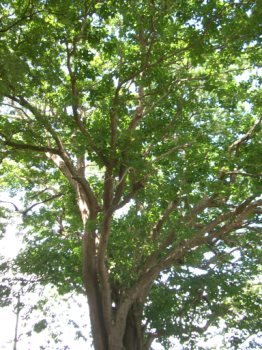 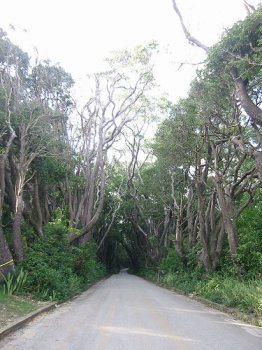 
The mahogany tree was introduced into
Barbados after the Treaty of Paris in 1763. Seen widely over the island, the
second photo shows the road to Cherry Tree Hill lined with Mahogany trees, it
has obvious uses in furniture manufacture.
ALL IN ALL
fascinating.
|

















